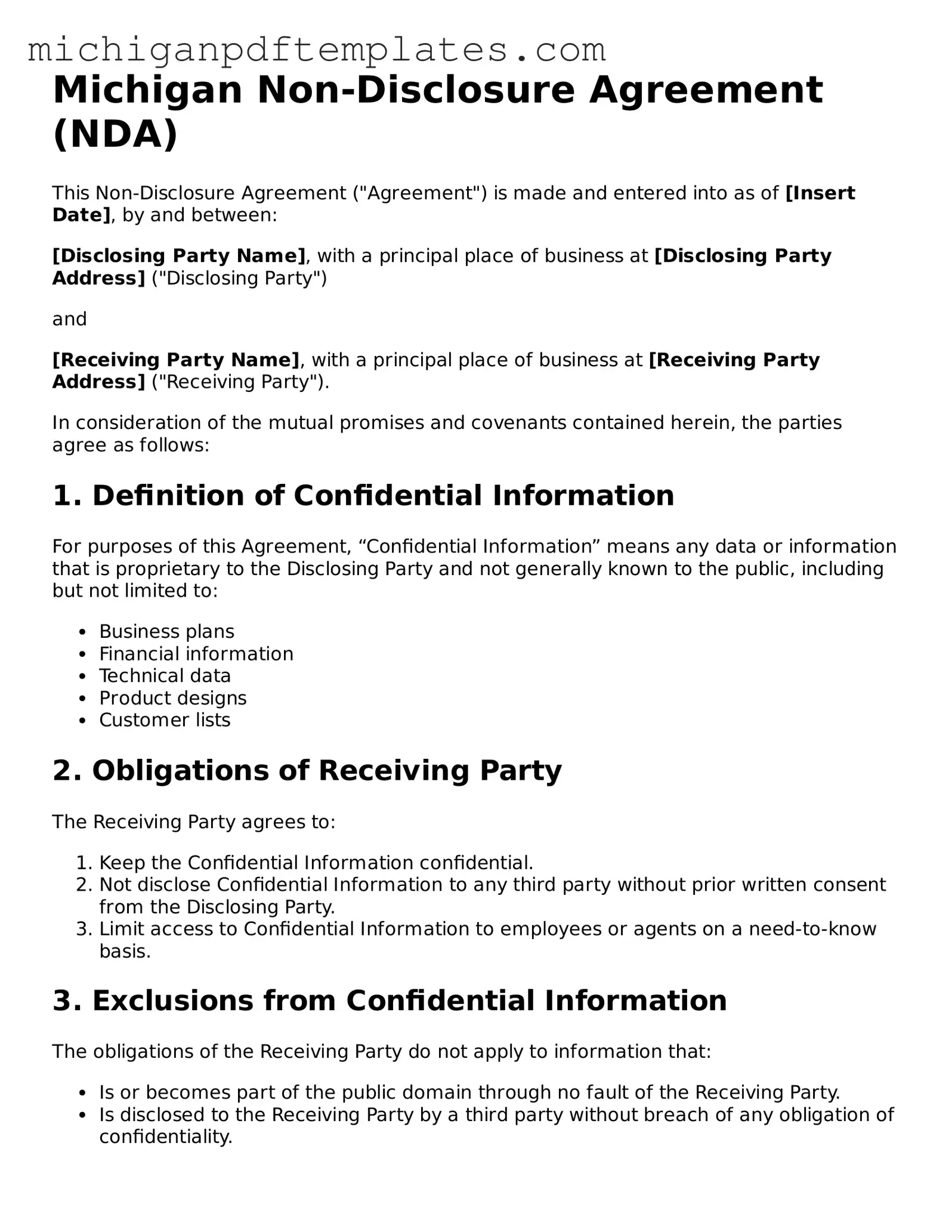In Michigan, a Non-disclosure Agreement (NDA) serves as a crucial tool for individuals and businesses looking to protect sensitive information from unauthorized disclosure. This legally binding contract outlines the terms under which confidential information is shared, ensuring that both parties understand their responsibilities regarding the handling of this information. Typically, an NDA includes key elements such as the definition of what constitutes confidential information, the obligations of the receiving party, and the duration of the confidentiality requirement. It may also specify any exclusions, such as information that is already public knowledge or independently developed. Understanding the importance of an NDA can help parties safeguard their intellectual property, trade secrets, and proprietary information, ultimately fostering trust and encouraging open communication in business relationships. By clearly defining the parameters of confidentiality, this agreement helps prevent potential disputes and legal issues down the line.
